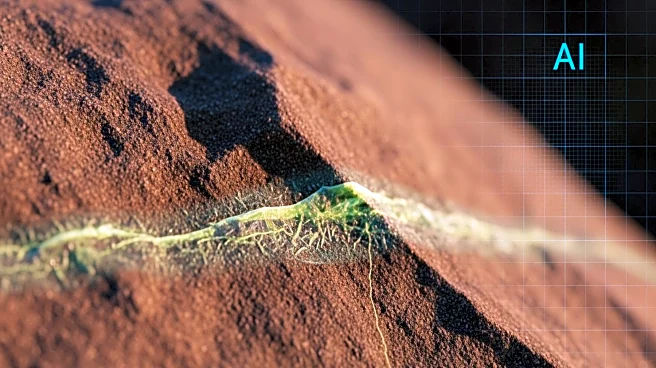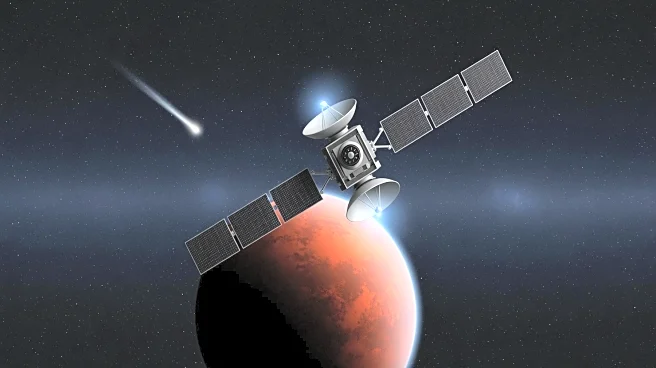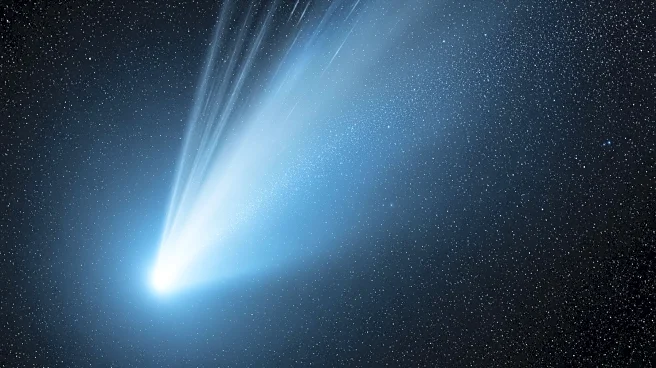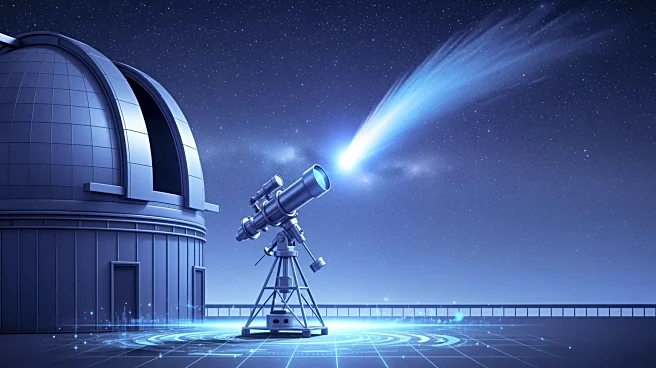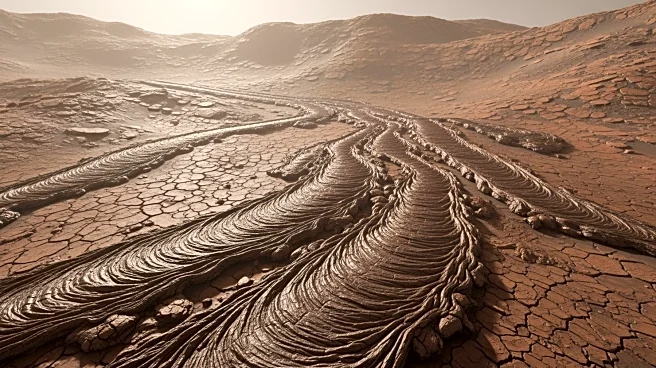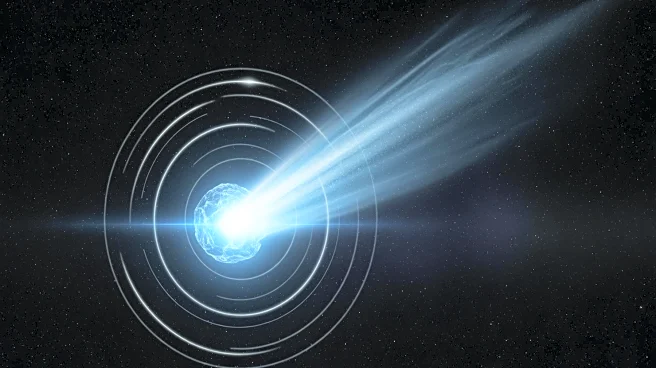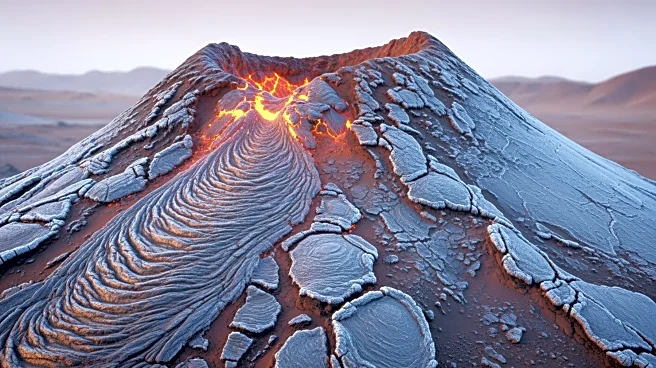What's Happening?
A team of scientists from the Carnegie Institution for Science has published a study revealing new chemical evidence of Earth's earliest life, found in 3.3-billion-year-old rocks. The research, which was
published in the Proceedings of the National Academy of Sciences, utilized artificial intelligence to analyze over 400 samples, including ancient sediments, fossils, and meteorites. The AI was trained to recognize chemical 'fingerprints' left by life, which can be detected even after billions of years. The study found that oxygen-producing photosynthesis occurred over 800 million years earlier than previously thought, extending the chemical record of photosynthesis preserved in carbon molecules by over 800 million years. This groundbreaking discovery doubles the window of time in which organic molecules preserved in rocks can provide information about the physiology and evolutionary relationships of their original organisms.
Why It's Important?
The findings have significant implications for understanding the evolution of life on Earth. By extending the timeline of photosynthesis, scientists can gain insights into the development of life and the conditions that supported it. This research also advances the potential for identifying traces of life beyond Earth, as the AI techniques used could be applied to Martian rocks or samples from other celestial bodies. The ability to detect biotic 'fingerprints' that have survived billions of years could revolutionize the search for extraterrestrial life, providing a new method to explore the universe for signs of life.
What's Next?
The study opens up new avenues for research into the evolution of life on Earth and the search for extraterrestrial life. Scientists may apply these AI techniques to other ancient samples to further explore the history of life on our planet. Additionally, the methods could be used in future space missions to analyze samples from Mars or other planets and moons, potentially leading to groundbreaking discoveries about life beyond Earth.
Beyond the Headlines
The use of AI in this research highlights the growing role of technology in scientific discovery. Machine learning can interpret complex data sets and uncover patterns that are not immediately apparent, offering new insights into longstanding scientific questions. This approach could lead to advancements in various fields, including geology, biology, and astrobiology, as researchers continue to explore the potential of AI in understanding the natural world.
